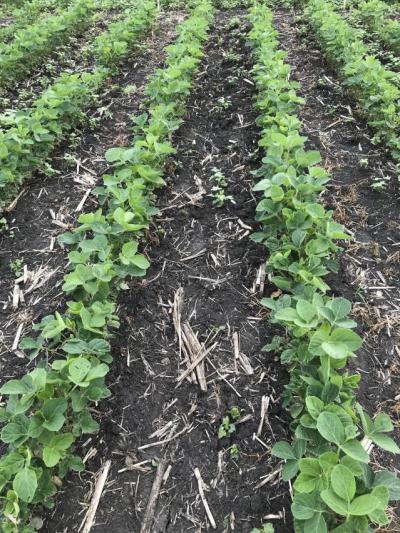This spring's weather has resulted in an unusually slow start to the growing season, especially when compared with the past two years. In springs like these, field operations are condensed and there may be temptation to skip some of the field preparation to get acres planted in a timely manner. This article will address considerations for herbicide applications in these situations.
Effective preemergence herbicides are imperative for successful weed management. Particularly, waterhemp populations are more difficult to control than ever, with many populations with resistance to multiple herbicide groups across the state. This includes populations that have up to 5-way herbicide resistance to Groups 2, 5, 9, 14, and 27. The early-season control provided by preemergence herbicides takes pressure off the limited number of postemergence herbicide options, therefore protecting the value of the products.
 An effective preemergence herbicide program dramatically reduces the number of weeds exposed to postemergence herbicides. Photo by Meaghan Anderson.
An effective preemergence herbicide program dramatically reduces the number of weeds exposed to postemergence herbicides. Photo by Meaghan Anderson.
Many products used in soybean are labeled only for preplant, preplant incorporated, or preemergence application, so careful planning to make sure these residuals go on before the crop begins to emerge is key this year. Check product labels for specific restrictions on the interval between planting and herbicide application. With the weather forecast as it currently stands, it is possible that fields planted in the next 10 days could emerge before sprayers are able to return for preemergence herbicide applications, if the focus remains solely on getting the crop planted.
In corn, most herbicides can be applied prior to or after crop emergence, meaning applicators have more flexibility to apply these products when timelines get tight. These labels are not without their own limits, including restrictions on timing of application by crop growth stage. Applicators should read labels carefully for growth stage limits, as well as any changes that might need to occur with tank mix partners, surfactants, or other additives like liquid nitrogen as a carrier. A potential downside of waiting until after crop emergence for these applications is yield loss related to competition from weeds. This article has more information on managing weeds to protect yield.
Balancing the need to get crops planted and have timely herbicide applications will likely be a significant challenge this spring. What may seem like a small delay in herbicide application to finish planting can easily turn into a weed management disaster if crops emerge before residual herbicides are applied. Prioritizing timely application of preemergence herbicides, especially in soybean, will be important to maintain optimal weed control, product performance, and crop yield this summer.
Additional Resources:
Preemergence Herbicide Application Timings: Pros and Cons
New Information on Herbicide Labels (2010 ICM News article describing addition of herbicide group numbers to product labels)
Take Action Herbicide Classification Chart







Post a comment
Report Abusive Comment